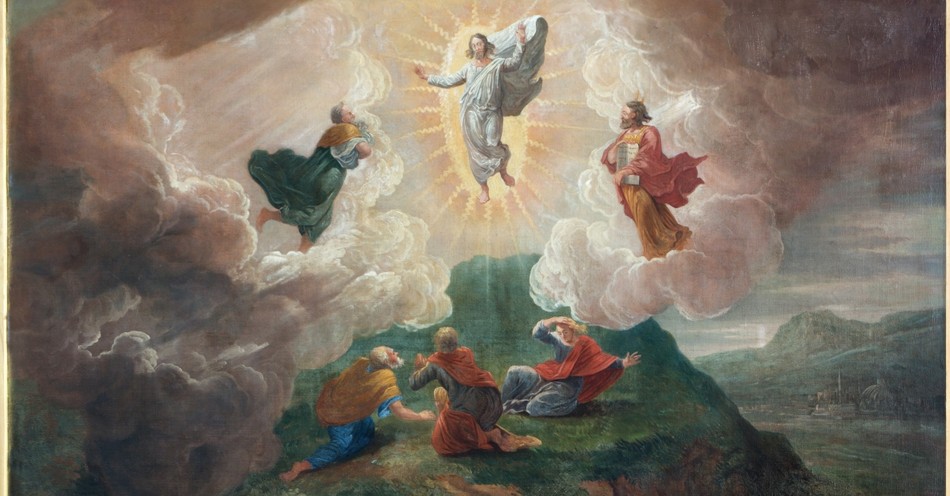Understanding the Transfiguration
I’ve been slowly working through the Gospel of Luke, reading and rereading chapters and focusing on various sections at a time. This morning, I focused on Luke 9:28-36, the passage on the transfiguration of Jesus. As I reflected on this text, I realized that what was happening was a heavenly form of gospel community, with God the Father, God the Son, Moses, Elijah, and Peter, James, and John.
What I found particularly impacting to me in this text was the topic of the community discussion. Verse 30 says that Moses and Elijah were talking with Jesus, and the centerpiece of that discussion was “his departure” or exodus through the cross. Moses (representing the Law) and Elijah (representing the Prophets) are figureheads of redemptive history up until the time of Jesus, and much like all of the Scriptures, they made the conversation about Jesus and His work on the cross.
Gospel communities can learn much from this conversation. We can learn from Moses and Elijah that all of Scripture testifies about Jesus (Luke 24:27). Moses and Elijah knew this. They were not interested in talking about types and shadows; they were interested in what those types and shadows pointed to–Jesus. This in no way diminishes Old Testament Scripture or the role Moses and Elijah played in redemptive history. In fact, it heightens it, knowing their stories are interwoven in the bigger story of God’s redemptive purposes in history, culminating in Christ.
But not only does it culminate in Christ, it climaxes in Christ. When the cloud overtook the disciples and God chose to speak, the Father declared that it is all about His beloved Son. And when God spoke, Jesus was all alone–alone because there is no one else like Him. Alone because Jesus has supremacy over all things and is superior to all prophets, kings, and priests. Alone because Jesus is preeminent and holds a place in history that demands our unconditional loyalty and submission as Lord and King.
Moses spoke about Jesus. Elijah spoke about Jesus. The Father spoke about Jesus and gave a heavenly charge to everyone else to listen to Jesus. At no other point in the earthly life of Jesus was there a more heavenly moment, and it is evident to everyone that this community was all about Jesus. In fact, when Peter wanted to make tents for Elijah and Moses was when they disappeared, leaving them with no one but Jesus.
As simple as it may sound, what we can learn from the Transfiguration is this: Christian community that pleases the Father and honors His Word is all about Jesus–who He is, what He has done, and what matters. The Christian community is preoccupied with Jesus because heaven is preoccupied with Jesus. We don’t get over Jesus. We are never bored with Jesus. We don’t keep silent about Jesus. We don’t change the channel or turn it down. Instead, we rediscover again and again through the Spirit’s work in our lives more and more the beauty and brilliance of our Savior. To the degree that our conversations center on Jesus, we can say we functionally have a gospel community. To the degree that we adore and treasure Jesus, we can keep our community from lesser lovers and broken cisterns.
If we could have a conversation today with the most significant figures in the history of redemption, they would be talking about Jesus–His life, death, and resurrection. But if people could have a conversation today with you and me, what would we want to talk about?
Bible Commentary on the Transfiguration
The transfiguration is recorded in each of the Synoptic Gospels ( Matt 17:1-9; Mark 9:2-10; Luke 9:28-36 ) and 2 Peter 1:16-21. The place of this event is "a high mountain" ( Matt 17:1; Mark 9:2 ). The association with a mountain is also found in Luke 9:28 and 2 Peter 1:18. Several geographical locations have been suggested: Mount Hermon (truly "high, " at 9, 200 ft.); Mount Carmel (out of the way for the surrounding events); and the traditional site of Mount Tabor (not a "high" mountain and the presence of a Roman garrison stationed on the top in Jesus' day makes this questionable). The biblical writers apparently were not interested in locating exactly where this event took place; they were more concerned with what took place.
Read more on the Transfiguration in our Bible Dictionary.
Related:
Tim Brister is a pastor and elder at Grace Baptist Church. Find out more on his blog: Provocations and Pantings. Photo: ©Getty Images/sedmak








